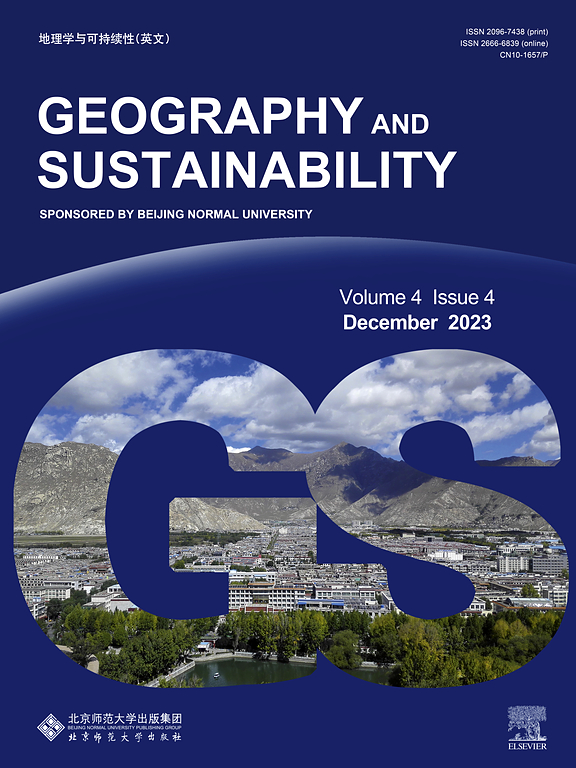Evaluating the effectiveness of the Shan-Shui Initiatives in China
IF 8
1区 环境科学与生态学
Q1 GEOGRAPHY, PHYSICAL
引用次数: 0
Abstract
The Shan-Shui Initiative has attracted global attention in massively contained ecological deterioration and restored millions of hectares of land in China. There are high hopes for this new combination of protection, restoration, and management of ecosystems, its overall benefits, however, remain uncertain. Here, we employed ecosystem service (ES) indicators to quantitatively evaluate the effectiveness of all pilot projects since 2016 at the national scale. Results show that after the implementation of Shan-Shui Initiative, ES have significantly improved, with increases in water yield (14.3 %), carbon sequestration (13.7 %), soil conservation (6.5 %), windbreak sand fixation (5.0 %), and habitat quality (0.7 %). The changes in ES were driven by both the Shan-Shui Initiative and climate change. Projects with longer implementation periods showed a more pronounced trend of growth in ESs, particularly evident in the ecological space. The spillover effects were widely present and the prevalence of positive spillover effects was notably greater than that of negative ones. Furthermore, the diverse interventions implemented in the Shan-Shui project had varying impacts on ES across different regions. Overall, these interventions showed a positive influence on ESs, although the degree of trade-off showed a south-high and north-low pattern. This highlights the necessity for ecological restoration efforts to carefully consider regional differences. This study may provide policy guidance for optimizing the layout and sustainable management of Shan-Shui ecological restoration projects.

评估中国“山水计划”的有效性
“山水计划”因大规模遏制生态恶化和恢复数百万公顷土地而引起全球关注。人们对这种保护、恢复和管理生态系统的新组合寄予厚望,然而,其总体效益仍不确定。本文采用生态系统服务(ES)指标对2016年以来全国范围内所有试点项目的有效性进行了定量评价。结果表明,实施“山水行动”后,生态系统得到了显著改善,产水量增加14.3% %,固碳量增加13.7% %,土壤保持力增加6.5% %,防风林固沙力增加5.0 %,生境质量增加0.7 %。ES的变化是由“山水倡议”和气候变化共同驱动的。项目实施周期越长,可持续发展空间的增长趋势越明显,特别是在生态空间。溢出效应广泛存在,且正向溢出效应明显大于负面溢出效应。此外,在“山水”项目中实施的各种干预措施对不同地区的ES产生了不同的影响。总体而言,这些干预措施显示出对ESs的积极影响,尽管权衡程度呈现出南高北低的模式。这凸显了生态恢复工作必须认真考虑区域差异。本研究可为山水生态修复项目的优化布局和可持续管理提供政策指导。
本文章由计算机程序翻译,如有差异,请以英文原文为准。
求助全文
约1分钟内获得全文
求助全文
来源期刊

Geography and Sustainability
Social Sciences-Geography, Planning and Development
CiteScore
16.70
自引率
3.10%
发文量
32
审稿时长
41 days
期刊介绍:
Geography and Sustainability serves as a central hub for interdisciplinary research and education aimed at promoting sustainable development from an integrated geography perspective. By bridging natural and human sciences, the journal fosters broader analysis and innovative thinking on global and regional sustainability issues.
Geography and Sustainability welcomes original, high-quality research articles, review articles, short communications, technical comments, perspective articles and editorials on the following themes:
Geographical Processes: Interactions with and between water, soil, atmosphere and the biosphere and their spatio-temporal variations;
Human-Environmental Systems: Interactions between humans and the environment, resilience of socio-ecological systems and vulnerability;
Ecosystem Services and Human Wellbeing: Ecosystem structure, processes, services and their linkages with human wellbeing;
Sustainable Development: Theory, practice and critical challenges in sustainable development.
 求助内容:
求助内容: 应助结果提醒方式:
应助结果提醒方式:


